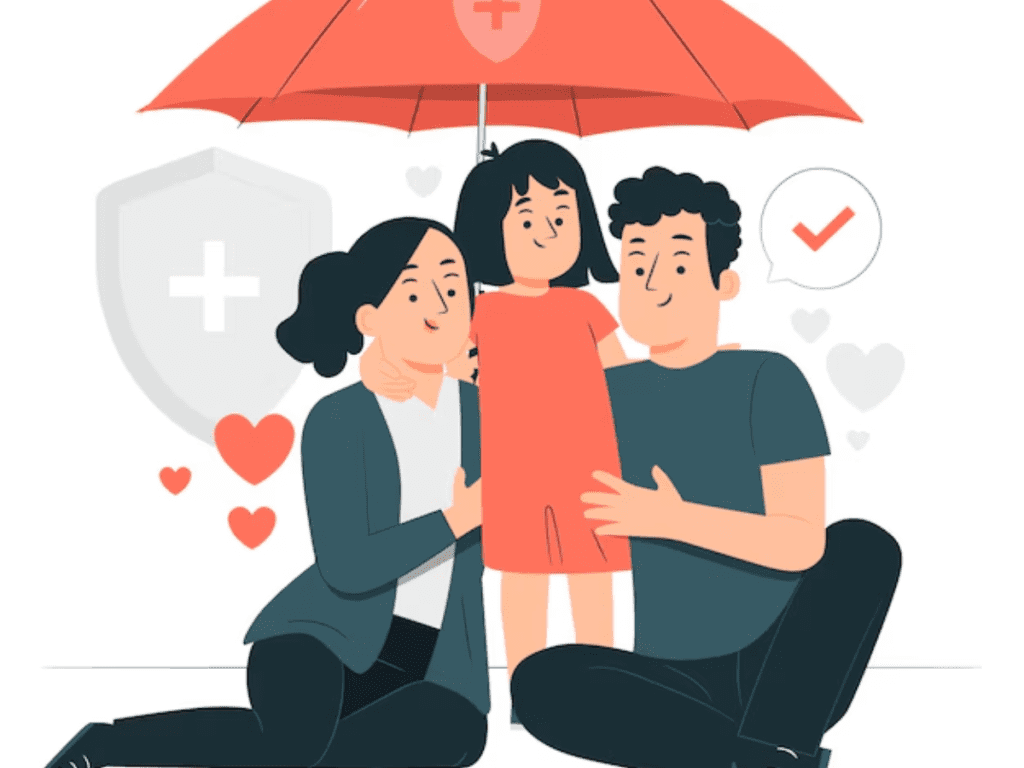Introduction
Life insurance is usually something that only older people with families and dependents have to concern themselves with However young adults can also gain a lot from obtaining life insurance at a young age Although most individuals in their twenties and early thirties might not immediately need a policy obtaining life insurance earlier than later has numerous financial and practical benefits
Life insurance gives loved ones peace of mind financial security and a chance to do long term financial planning Many individuals wait to buy life insurance believing that they are too young and healthy to require it However the truth is getting life insurance sooner rather than later can lock in cheaper premiums and offer future security
This piece will delve into why young people ought to get life insurance what it entails the various forms of policies and the long-term benefits of getting an early coverage
Understanding Life Insurance
Life insurance is a legal agreement between someone and an insurer Individuals pay premium charges on a routine basis The company guarantees the issuance of money named the death benefit to beneficiaries who are predetermined in the agreement In case the holder dies their dependent can have funds to secure them financially These lump sums might consist of financing that is guaranteed towards paying various amounts of fees The death benefits receive tax privileges based on this benefit.
Types of Life Insurance
Young adults have various life insurance options based on their financial needs and goals The two primary types of life insurance are
Term Life Insurance
Term life insurance insures for a certain number of years typically 10 20 or 30 If the policyholder dies within the term the death benefit is paid to the beneficiaries If the policyholder survives the term coverage terminates unless renewed or converted into a permanent policy
Term Life Insurance Benefits
Low premiums compared to permanent life insurance
Simple and easy to understand coverage
Ideal for those looking for temporary financial protection
Disadvantages of Term Life Insurance
No cash value or investment component
Coverage expires at the end of the term requiring renewal or a new policy
Permanent Life Insurance Whole Life and Universal Life
Permanent life insurance provides lifetime protection as long as premium payments are made These kinds of policies contain a cash value portion that compounds over time permitting policyholders to tap the cashed-out amounts for other money demands
Advantages of Permanent Life Insurance
Guarantees lifelong coverage without sunset
Accrues cash value which can be borrowed or surrendered
Can serve as a tool for estate planning and retirement savings
Disadvantages of Permanent Life Insurance
Higher premiums compared to term insurance
More complex than term insurance requiring careful financial planning
Why Young Adults Should Consider Life Insurance
Most young adults feel they don’t need life insurance as they are single and healthy or have no dependents However there are a few reasons why purchasing coverage early can be a good idea
Lower Premiums Due to Age and Health
Life insurance premiums are primarily determined by the age and health of the policyholder The healthtier and younger an individual is the cheaper the premium will be Because underwriters evaluate risk prior to issuing a policy young adults typically are able to get the lowest rates
Example A 25 year old in good health can obtain a term life policy at a fraction of the monthly premium that a 40 year old would pay for the same policy By securing a low rate early, people can save thousands of dollars in the life of the policy
Financial Protection for Loved Ones
Even if a young adult does not have dependents at the moment they might have financial obligations that would affect their loved ones if they were to die Life insurance can be used to pay for many different things such as
Unpaid debts such as student loans car loans and credit card debt
Medical expenses and funeral costs which can be a heavy financial burden on relatives
Financial assistance to elderly parents or other relatives who might be dependent on their earnings
Example In the event of a youth having a co signed student loan and dying their family can still be forced to repay the outstanding amount Life insurance guarantees that such financial burdens do not land on remaining loved ones
Locking in Low Rates in the Future
Life insurance premiums rise as individuals get older and develop health issues Purchasing a policy early on fixes low premiums even when health issues come up later in life
Example A person who is 30 years old and gets a medical condition like diabetes or blood pressure problem can end up paying a much higher premium compared to a person who purchased protection at age 25 By paying premiums early young adults can safeguard themselves against increasing costs and possible future health issues
Peace of Mind and Long Term Financial Planning
Life insurance ensures money in the event of untimely situations not falling on loved ones’ shoulders Besides permanent life insurance policies generate cash value over time that can be utilized for different money requirements such as
Creating an emergency fund
Offering supplementary retirement income
Borrowing against the policy without reducing coverage
Example A young adult may utilize the cash value of a whole life insurance policy to pay for a down payment on a house or finance a business venture providing financial flexibility in the future
Employer Provided Life Insurance May Not Be Enough
Most employers provide life insurance as a company benefit but the policies used are modest in coverage and do not transfer when changing jobs Personal life insurance policies ensure long term protection irrespective of employment
Why Personal Life Insurance is Important
Employer plans typically provide only one to two times an employee’s yearly salary that is not always sufficient for long term financial obligations
If one quits his job he can lose his coverage leaving him without insurance at a bad time
How to Determine the Right Coverage Amount
The right life insurance coverage is based on many factors such as
Current and future financial obligations such as debt and potential dependents
Expected future income and lifestyle expenses
Desired financial support for loved ones in the event of an unexpected passing
A common recommendation is to have coverage that is 10 to 15 times your annual income to ensure adequate financial security
Common Myths About Life Insurance for Young Adults
Myth One I Am Young and Healthy So I Do Not Need Life Insurance
Reality Young people are generally in good health, but accidents and unexpected illness may happen Life insurance is least costly if you buy it when you are young, and postponement may make you pay more in the long run
Myth Two Life Insurance is Too Expensive
Reality Term life insurance is very affordable and usually cheaper than a streaming service or daily coffee By planning ahead young adults can well afford coverage without breaking the bank
Myth Three I Do Not Have Dependents So I Do Not Need Life Insurance
Reality Even without dependents, life insurance can pay off existing debts medical expenses and funeral expenses avoiding financial hardships on the family. It is also an instrument of long term financial planning.
Myth Four I Can Get It Later When I Need It
Reality Unexpected illnesses or accidents can happen at any time Delaying life insurance coverage can result in higher premiums or difficulty obtaining coverage later due to health conditions
How to Choose the Right Life Insurance Policy
When selecting a policy consider the following factors
Budget choose a plan with premiums that fit your financial situation
Coverage requirements evaluate your current needs and future objectives
Type of policy choose between term insurance or permanent insurance based on long term planning requirements
Insurance company reputation choose a solid company with good financial stability and good customer service
The Long-Term Advantages of Getting Life Insurance Early
When young adults invest in life insurance early, they set themselves up for long-term financial security. Beyond just providing a death benefit to beneficiaries, life insurance can be a tool for financial growth, risk management, and peace of mind. Here are some additional benefits of getting life insurance early in life.
- Life Insurance Can Serve as an Investment Tool
For individuals who choose permanent life insurance, the policy features a cash value aspect that accumulates with time. This implies that some of the paid premium is used to accumulate as savings, and it can be utilized in different ways.
How Cash Value Functions
The policyholder makes premium payments, some of which are deposited into a savings element.
The cash value accumulates over time and may be accessed tax-free under specific circumstances.
This built-up fund can be borrowed against or even cashed out if necessary.
Illustration: A young adult who buys a whole life policy at age 25 can build up considerable cash value by their 40s or 50s. This money can be applied to pay for unexpected expenses, pay for a child’s education, or as a supplement to retirement income.
- Tax Benefits of Life Insurance
Among the frequently undervalued advantages of life insurance is its tax benefits. Based on the policy and its structure, life insurance can offer monetary rewards with little or no tax burden.
Tax-Free Death Benefit: The death benefit disbursed to beneficiaries is usually tax-free, so loved ones can receive the entire amount for financial assistance without government withholding.
Tax-Deferred Growth: In the case of permanent life insurance policies, the cash value is grown tax-deferred, which makes it grow faster than taxable investments.
Tax-Free Loans: Borrowing against the cash value does not invoke tax liabilities for the policyholder, which makes it a financial aid ideal for significant expenditures.

